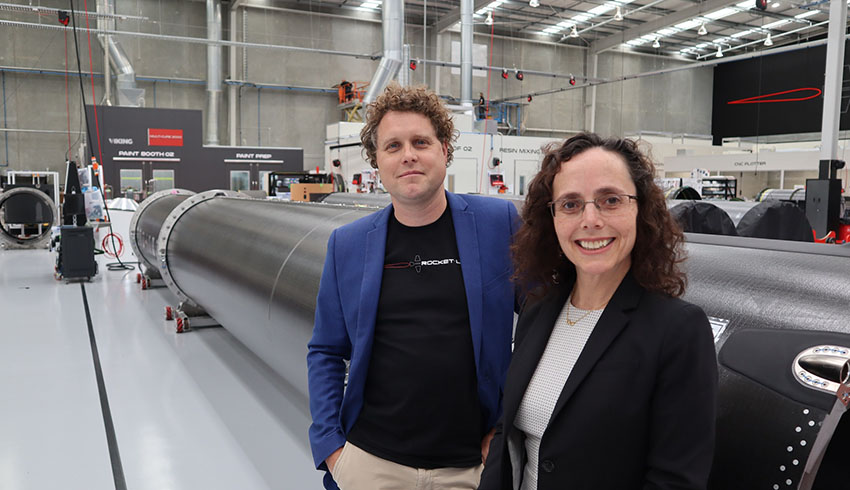The new site, called Launch Complex 2 (LC-2), located at the Mid-Atlantic Regional Spaceport at Wallops Island, Virginia, will share launch duties with the Rocket Lab Launch Complex 1 n New Zealand.
However LC-2, adjacent to the launch site used by Northrop Grumman for its Antares rockets, is specifically designed for US government customers that prefer to launch from American territory and who also want responsive launch capabilities. It’s designed to handle up to a dozen launches a year.
Rocket Lab founder and chief executive, New Zealander Peter Beck, said the two Launch complexes looked identical, although some improvements had been made to LC-2.
“That’s part of the reason why we were able to build the site so quickly,” he said.
Construction started in February.
Beck said the enhancements to LC-2 were mostly to support US national security customer launches and included increased security.
SpaceNews said a separate integration facility a short distance away from the launch pad could support multiple Electron rockets. There are separate cleanrooms for payload processing to handle short notice launches.
Rocket Lab said the there will be a staff of around 30, including engineers and office administration.
LC-2 is complete but Rocket Lab has planned some final testing.
“The next big step is to put a rocket on the pad and then do all the interface testing between the launch vehicle and the pad,” Beck said.
Rocket Lab said its first customer for LC-2 would be the US Air Force, which will launch a microsatellite mission called STP-27RM for the Space Test Program, which provides flight opportunities to try out advanced technologies in space.
The launch will be in the second quarter of 2020.
USAF Lieutenant Colonel Meagan Thrush said the payload was a research and development satellite called Monolith, developed by the Air Force Research Lab, which will examine the ability of small satellites to support large aperture space weather payloads.
Rocket Lab plans its next launch from LC-1 in New Zealand in January.
That will feature a second trial of the technology successfully demonstrated at the most recent launch on 6 December for recovering the Electron rocket first stage for reuse.
In the December launch, Rocket Lab didn’t actually recover the stage but did successfully direct its return, all the way to impact with the ocean surface.
“It puts us light-years ahead of where we’re expecting to be and really accelerates our recovery efforts,” Beck said.
“The next step is to splash it down into the water gently and then the step after that is to recover it in mid-air with a helicopter.”

